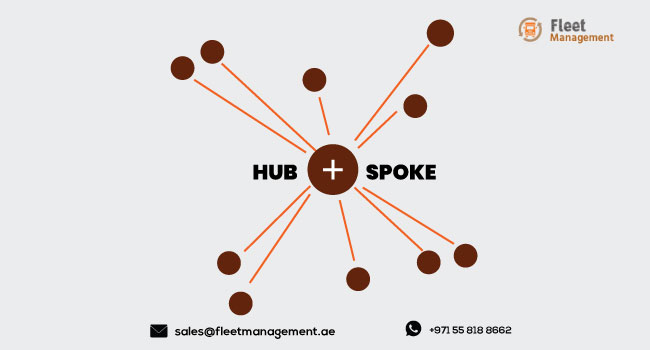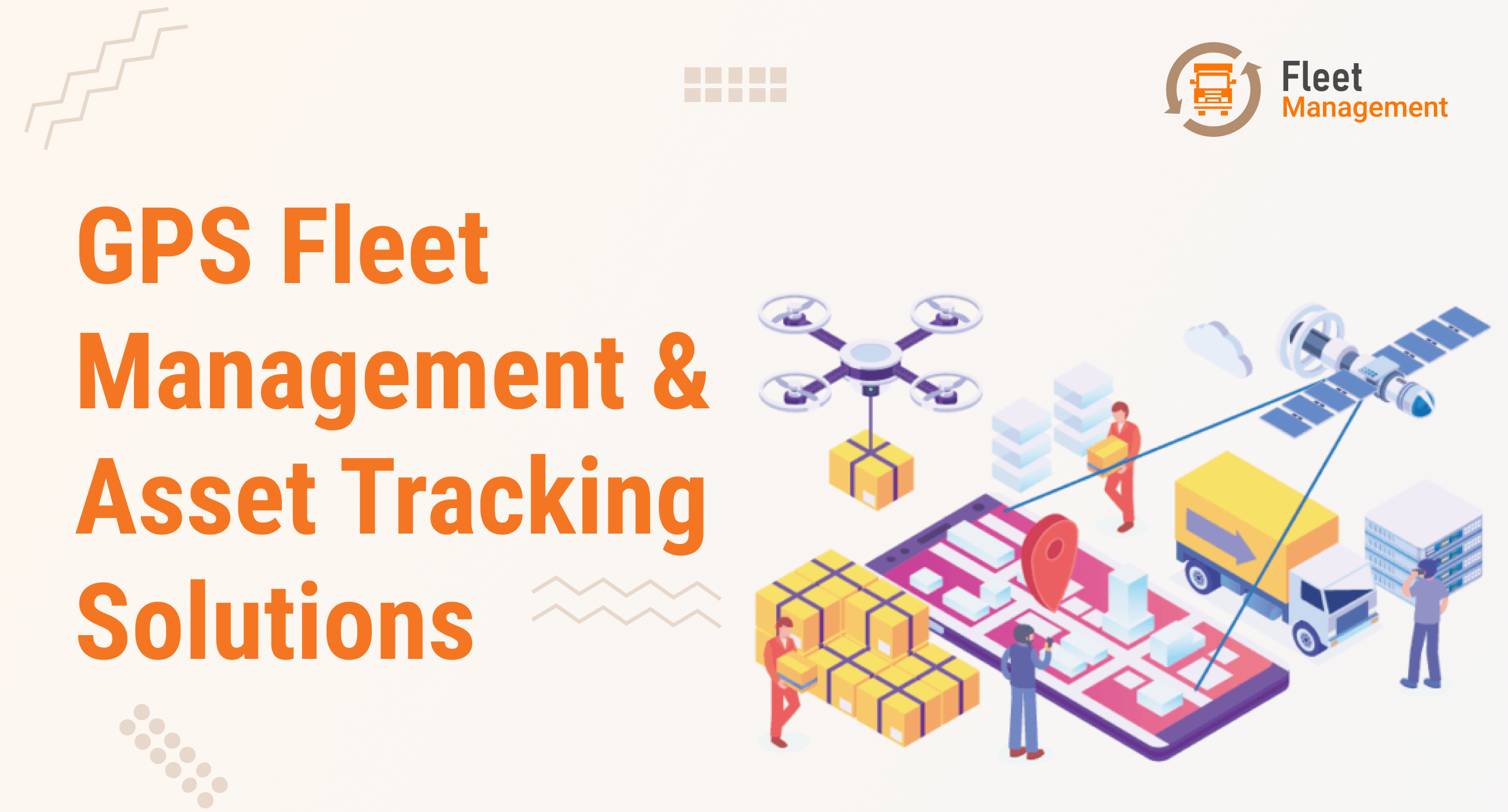Our Blogs
 Fleet Management()
Fleet Management() Car Rental Software()
Car Rental Software() Fleet Drivers()
Fleet Drivers() Infographics(0)
Infographics(0) News(0)
News(0)
Service We Offer
Follow Us
Importance of Hub & Spoke Distribution Model in Modern Telematics

Logistics is one of the essential links that make the Supply Chain. On-time shipments can help guarantee customer satisfaction. But on the other hand, manufacturers need to balance delivery speed with cost to maintain the bottom line.
Over the years, logistics has used different kinds of distribution models based on the need and resources available. In the early days, all products were shipped to the large dealers who then further distributed the products to the smaller dealers or directly to the outlets. In many cases, the shipping routes overlapped as each larges dealer was just focused on his circle of smaller dealers and outlets.
Secondly, it was difficult to gather relevant data from all the stakeholders to streamline the supply chain process. The hub and spoke distribution model was designed to overcome the challenges and issues of the traditional model.
What is the Hub and Spoke Distribution Model?
The hub and spoke distribution model is based on the design of a wheel. The wheel that set the spark for the industrial revolution in the early ages is now redefining modern telematics.
Read Also: How Does IoT Help In Fleet Management?
According to this model, the center of the wheel forms the hub and the spokes move in different directions from the central hub. Each spoke represents the direction of delivery. This model is used in various sectors such as eCommerce, grocery, FMCG, pharma, retail, and 3PL.
In the traditional point-to-point distribution model, the shipment would be moved from one point to one destination based on availability and need. So, sometimes one shipment may take days to reach or many partially filled trucks will keep going back to the same destination. All this would result in additional time and expenses. The hub and spoke model overcome these issues.
How does the Spoke and Distribution Model Work?
In the hub and spoke distribution model, the hub is at the center. All shipments to the destinations around this hub are made from this hub. In case, the products need to be shipped to a different zone, maybe state or country, then the products are shipped to the closest hub.
To illustrate, there are products in Hub A that need to be delivered to destinations that are in the Hub B Zone. The products are shipped from Hub A to Hub B. The driver drops the shipment in Hub B and returns to the Hub A. Hub B then ships the products to the destination.

In case, there are multiple deliveries to the same destination from Hub B, they are clubbed together and sent through the same shipment. So, in this model, a driver doesn’t have to drive through the entire distance. This means that the driver will be able to return within a day. Secondly, it reduces empty miles and also speeds the delivery process.
Benefits of using the Hub and Spoke Model
Streamlines Shipment
Warehouse managers can effectively plan shipments because all the shipments will be picked from the hub and transported to the designated locations. The managers can plan the schedule of the delivery agents for the day. The centralized hub also makes loading and unloading or storing, if necessary easy and efficient.
Improves productivity
A warehouse manager or supply chain manager has to deal with multiple orders, shipments, and at the same time manage the schedule of the trucks, drivers, and other employees. At the same time, they should also consider traffic constraints, issues in the routes, and other issues that may crop up suddenly.
Read Also: What Are The Benefits of Fleet Management Software?
In a hub-and-spoke distribution model, the hub manager will only have to deal with incoming and outgoing supplies of the hub and its associated spokes. The model streamlines the shipment and reduces the stress on the manager or supervisor, which in turn helps improve productivity. The manager will only have to consider the spokes while planning the schedule, so he/she will not be overwhelmed with too many details.
Optimized Route Planning
As the freight network is around the hub and the spokes, route planning can be optimized. The managers can consider customer preferences, delivery timings, peak traffic hours, last-mile delivery operations, ground restrictions, and other factors while preparing the shipment schedule. Based on the current orders, availability of supplies, and dispatch deadlines, the manager can plan an optimized route.
Continuous Load Movement
One of the top benefits of using the hub and spoke distribution is continuous load movement. This model allows for centralized handoffs, so all the hubs will be working at their optimum capacity at all times.
Reduces Logistics Routes
As we discussed earlier, the hub-and-spoke distribution model takes away the overlapping of routes. It also reduces the need to have multiple distribution centers inside a city. This model also considers last-mile delivery while planning the route, which further reduces the logistics cost. So, on the whole, this model is cost-effective.
Reduces Carbon Footprint
This model not just improves the efficiency and productivity of the supply chain, but also helps reduce the carbon footprint. Firstly, this model helps optimize the route, which cuts down on the miles traveled. Secondly, it reduces the need to drive empty miles, which further reduces fuel usage and carbon emissions.

Improved Driver Recruitment and Retention
This model reduces the stress on the drivers. They don’t have to drive for very long distances. Also, most of the time, the drivers can return home for the night. The model also improves route consistency and safety. In turn, it improves the driver’s dependability and performance. Good driver performance will improve the performance of the supply chain.
Effective Data Management
This centralized hub with spokes model also allows for effective data management. Data such as regular routes, driver performance, order frequency, destination times, and challenges in shipment can be collated. Analyzing this data can help identify areas of improvement in each hub. The best practices used in one hub can be implemented in other hubs to improve the overall performance of the entire system.
Make your Hub and Spoke Distribution Model More Efficient with a Fleet Management System
A hub and spoke model can help streamline your logistics and at the same time reduce costs and efforts involved in the process. However, you can make the model more effective by replacing manual planning with a fleet management software application.
Read Also: What is fleet management – All you need to know
This application will help automate schedules and follow-ups, track vehicle movement, and delivery times. It also allows hub managers to communicate with drivers and get instant updates on the freight times.
Want to know more about how you can use a fleet management system to optimize your logistics? Contact us right away.








